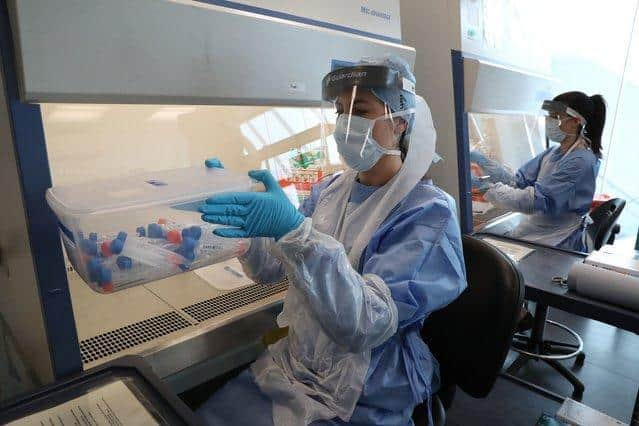Fears over undetected Omicron hotspots in Milton Keynes as four cases are confirmed in the borough
and live on Freeview channel 276
Only a fraction of PCR swabs from some parts of England are tested for a key sign of the ‘highly infectious’ variant, leading scientists to fear that geographical outbreaks are going under the radar.
This has raised fears among scientists that hotspots of the “highly infectious” variant could be going undetected, particularly in the South West and South East.
Advertisement
Hide AdAdvertisement
Hide AdThe news comes as four Omicron cases are confirmed in Milton Keynes and others are under investigation.


About one in every six positive PCR tests are sent for genome sequencing to determine which variant they are - a process which can take many days.
A quicker way to spot potential Omicron cases is to look for a marker called the S-gene, which is missing in variants such as Omicron and Alpha but present in Delta cases.
A quicker way to spot potential Omicron cases is to look for a marker called the S-gene, which is missing in variants such as Omicron and Alpha but present in Delta cases.
Advertisement
Hide AdAdvertisement
Hide AdOnce identified, swabs showing so-called ‘S-gene dropout’ can then be sent for definitive testing for Omicron.
Milton Keynes is one of four UK labs to use a Covid testing system which detects the S-gene. The others are in Newcastle, Glasgow and Alderley Park in Cheshire.
But only about a third of PCR swabs are sent to one of these sites, rather than other labs, with the proportion varying widely across the country.
In MK, 298,293 PCR specimens were sent to labs between 1 July to 28 November this year. The proportion of these processed in labs which test for S-gene dropout was 47.0%. This is higher than the national average of 34.94%.
Advertisement
Hide AdAdvertisement
Hide AdProf Rowland Kao, of the University of Edinburgh, who contributes to the Scientific Pandemic Influenza Group on Modelling (Spi-M) government advisory group, told The Guardian that geographical patchiness of S-gene dropout testing was a concern.
He said that “if we want to slow down the spread of Omicron in the UK, we need to be able to identify geographical clusters”.
Health Secretary Sajid Javid told the Commons on Monday that labs had now brought in other methods to try to detect the new variant.
He said this capability was being expanded so that all testing centres would be able to pick it up “very soon”.
Advertisement
Hide AdAdvertisement
Hide AdThe Covid-19 testing lab at Queen Elizabeth University Hospital in Glasgow is one of only four in the UK testing for the S-gene, a marker of Omicron
The HSA said that in the week to December 6, 705 swabs had been found to have S-gene dropout, most in London and the South East.
But it acknowledged that attempts to identify trends are “affected by the coverage of laboratories contributing to this surveillance data”.
Omicron is likely to replace Delta as the dominant strain and is set to be responsible for at least half of UK coronavirus cases in the next two to four weeks, according to the UK Health Security Agency (HSA).
Advertisement
Hide AdAdvertisement
Hide AdJavid warned yesterday that Omicron cases within the UK could “exceed one million” by the end of December.
Immune protection - either through vaccination or having had the virus before - is also lower with Omicron than with other variants, early research shows.
It is not yet known whether Omicron brings a greater or lesser risk of serious illness or death.
The HSA’s Chief Medical Advisor, Dr Susan Hopkins, said: “It is increasingly evident that Omicron is highly infectious and there is emerging laboratory and early clinical evidence to suggest that both vaccine-acquired and naturally acquired immunity against infection is reduced for this variant.
“It is therefore absolutely critical that we all do everything that we can to help break the chains of transmission and slow the spread of this new variant.”